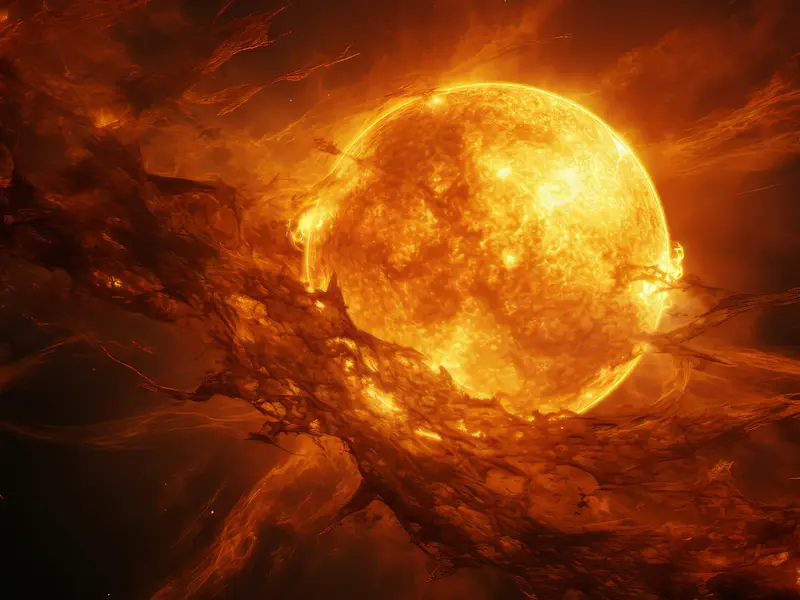A dramatic warning has emerged from Ben Davidson, founder of Space Weather News, who claims that a catastrophic solar event could eliminate up to 90 percent of the human population. Speaking on the Matt Beall Limitless podcast, Davidson argued that Earth is already in the midst of such a crisis and that devastation could unfold at any time. He pointed to the Sun as the primary threat: a potential “solar micronova” — a sudden, massive outburst of energy — which, he says, could trigger a magnetic pole shift, destabilize the climate, and spark tsunamis and other disasters leading to mass extinction.
Solar storms themselves are a well-documented phenomenon. Typically, they cause disruptions to satellites, power grids, and communications. However, Davidson claims the Sun produces far larger eruptions at semi-regular intervals, citing a cycle of about 6,000 years for moderate events and 12,000 years for extreme ones. He compares the risk to the so-called Carrington Event — an 1859 (not 1959) geomagnetic storm that fried telegraph lines — but predicts the next major geostorm could dwarf even that and arrive within 10 to 25 years. He also points to Earth’s weakening magnetic field, caused by natural changes in the outer core’s molten iron flows, as a factor that could amplify the effects of a solar onslaught.

Davidson further warns that even if such a storm doesn’t immediately “cook” the planet, the resulting infrastructure collapse would be catastrophic. Without electricity, he suggests, fuel, food supplies, and emergency services would be exhausted within days. He links present-day climate disruptions to this scenario as evidence that the process is already underway.
Yet much of this narrative goes far beyond mainstream science. While researchers do agree that Earth’s magnetic field is gradually weakening and that a sufficiently strong solar storm could cripple power grids and satellites, the idea of a “micronova” from the Sun wiping out most life lacks robust peer-reviewed evidence. NASA and other agencies monitor solar activity constantly; current data show an active but typical solar cycle, not an impending extinction-level event. Likewise, predictions of mass extinction from rising CO₂ levels are based on timescales of hundreds of millions of years, not the immediate future.
In short, the Sun does pose real hazards — as the 1859 geomagnetic storm demonstrated — but claims of a near-term event that could kill 90 percent of humanity remain speculative and controversial rather than established fact.


